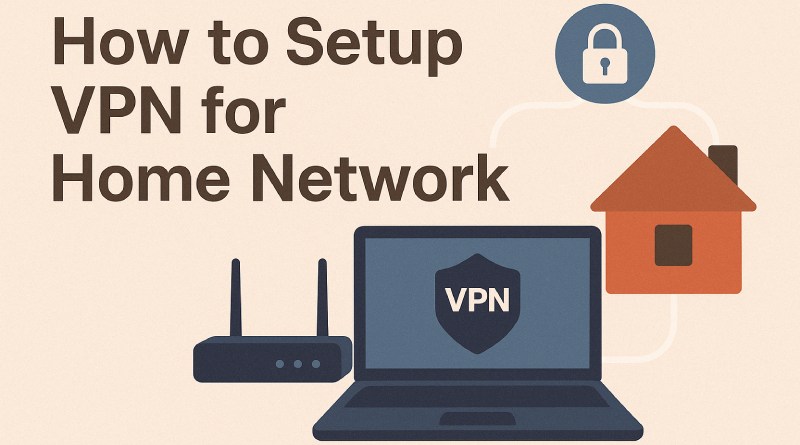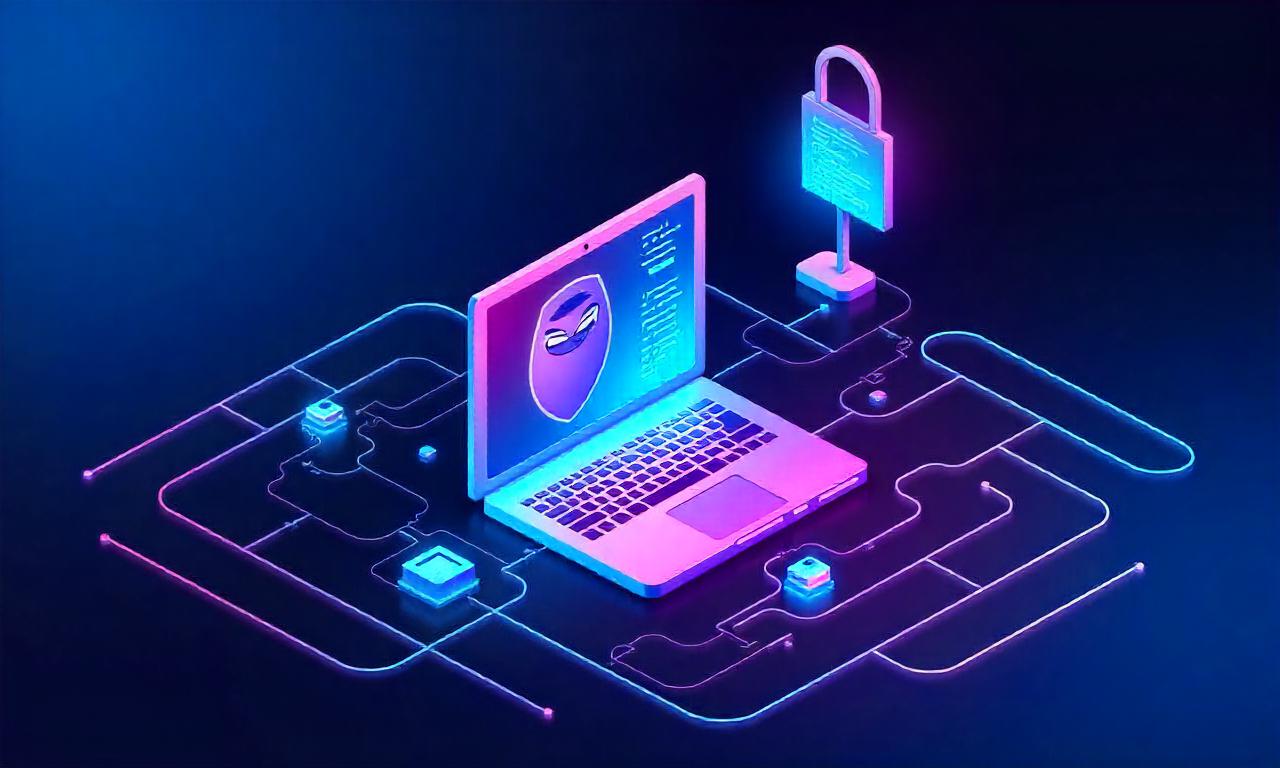Learn how to setup VPN for home network with our easy guide. Protect your data, access devices remotely & boost online privacy with step-by-step instructions.
In an age where digital threats loom around every virtual corner, setting up a VPN for your home network has become more than just a tech geek’s hobby—it’s a smart move for anyone serious about online privacy and security.
This guide will walk you through how to setup VPN for home network, even if you’re not a networking wizard. Trust me, it’s easier than it sounds, and totally worth it.
Whether you’re looking to encrypt your browsing data, access your home files while traveling, or stream geo-blocked content, a VPN is your best friend. I started exploring home VPNs while working remotely, and now I can’t imagine my digital life without it.
Who is this guide for?
- Remote workers who need secure access to their files
- Small business owners with sensitive data
- Tech hobbyists curious about home automation and network protection
- Privacy-conscious users who don’t want ISPs snooping around
Table of Contents
ToggleWhat is a Home Network VPN?
A home network VPN (Virtual Private Network) acts as a secure tunnel between your device and the internet, masking your IP address and encrypting all traffic. It protects your data from being intercepted by third parties like hackers, ISPs, or even advertisers.
Key Benefits:
- Encrypts internet traffic
- Allows safe remote access to your local network
- Bypasses geographical restrictions on content
- Protects all devices connected to your network when configured on a router
VPN Server vs VPN Client:
- VPN Client: Used when you connect to a commercial VPN service (e.g., NordVPN, ExpressVPN).
- VPN Server: Installed on your home device (like a router or Raspberry Pi), allowing you to connect back home securely.
Common Misconceptions:
- VPNs aren’t just for hackers or corporate environments.
- Setting one up doesn’t require a computer science degree.
- Running your own VPN server doesn’t mean breaking the bank.
Read More : How to Choose the Best VPN for Your Needs
Things You’ll Need Before Setting Up a VPN at Home
Before jumping into the techie stuff, here’s your prep checklist:
- Reliable Internet Connection: A fast, stable connection ensures good performance.
- VPN-Capable Router or Device: You can use:
- VPN-ready routers (e.g., ASUS, Netgear, Ubiquiti)
- Raspberry Pi
- Old laptop or desktop
- NAS systems like Synology or QNAP
- Dynamic DNS (DDNS): Optional but helps if your home IP changes frequently.
- VPN Software:
- OpenVPN (very secure and flexible)
- WireGuard (lightweight and fast)
- Third-party solutions
- Basic Networking Knowledge:
- Port forwarding
- Assigning static IPs
- Firewall management
Pro tip: Use this step-by-step TP-Link router VPN guide if you’re starting with a consumer-grade router.
How to Setup VPN for Home Network
Let’s get into the nitty-gritty. This section breaks down the whole process into digestible steps.
1. Choose the Right VPN Type for Your Needs
Before you touch your router, decide: Do you want a self-hosted VPN or a commercial VPN service?
Self-Hosted VPN Server Pros:
- Full control over your data
- No monthly fees
- Customizable security settings
Commercial VPN Pros:
- Quick and easy setup
- Global server locations
- Typically faster support
Recommended Protocols:
- OpenVPN: Robust and secure, slightly more complex to configure
- WireGuard: Modern and super fast
- IKEv2/IPSec: Great for mobile devices
Think of it like choosing between baking your own bread or buying a premium loaf from the store. Both are valid; it depends on your time, skills, and control needs.
2. Set Up a VPN Server on Your Home Network
You have several options here, each with its own setup complexity and learning curve.
Option A: VPN-Ready Router
- Log in to your router’s admin page
- Look for VPN section and enable OpenVPN or WireGuard
- Upload server certificates and configure user access
Option B: DIY Setup on a Device
- Use a Raspberry Pi with PiVPN (OpenVPN or WireGuard)
- Set up a Windows/Linux machine with OpenVPN
- Consider using Docker if you’re comfy with containers
This is where it gets exciting—you’re building your own secure access point!
Read More : Top 5 Benefits of Using a VPN for Digital Experience
3. Configure Port Forwarding on Your Router
To access your home VPN from the outside world, you need to forward the right port on your router to your VPN server.
Steps:
- Log in to your router’s admin panel
- Go to “Port Forwarding” or “Virtual Server” settings
- Add a new rule:
- Service name: VPN
- External & internal port: 1194 (OpenVPN) or 51820 (WireGuard)
- Internal IP: IP of your VPN server
Check your router’s manual or TP-Link router VPN setup guide if stuck.
4. Set Up Dynamic DNS (DDNS) for Easier Remote Access
Most home IP addresses change regularly unless you pay extra for a static IP. That’s where DDNS comes in.
Popular Free DDNS Providers:
- No-IP
- DuckDNS
- Dynu
Steps:
- Register with a DDNS provider
- Create a custom hostname (e.g., myhomevpn.duckdns.org)
- Set up DDNS client on your router or VPN server
- Use the DDNS hostname in your VPN client settings
Now you can connect to your home from anywhere, without memorizing random IP numbers.
5. Generate VPN User Profiles and Certificates
Next, you’ll need credentials to connect securely.
For OpenVPN:
- Use Easy-RSA to generate CA, server, and client certs
- Create unique profiles for each user/device
For WireGuard:
- Generate key pairs using wg genkey and wg pubkey
- Add users to the server config with their public keys
Set strong passwords and keep your private keys… well, private.
Read More : How to Optimize VPN for Remote Work Efficiency
6. Install and Configure VPN Client on Your Devices
With your server and credentials ready, let’s install the client.
On Windows/macOS:
- Use OpenVPN GUI or WireGuard client
- Import .ovpn or .conf files
On Mobile (iOS/Android):
- Download OpenVPN Connect or WireGuard from the app store
- Scan config QR code or import files
Once done, tap connect and boom! You’re securely in your home network.
7. Test Your VPN and Ensure Everything Works
This step is crucial.
Testing Checklist:
- Visit ipleak.net to check for IP/DNS leaks
- Try accessing your home PC or NAS
- Confirm upload/download speeds are reasonable
- Test multiple devices and protocols
Better to spend 5 minutes testing now than 2 hours troubleshooting later.
8. Enhance Security and Performance
Your VPN works, but let’s harden it like a digital fortress.
Tips:
- Configure firewall to only allow VPN traffic
- Disable split tunneling unless you trust your network
- Monitor logs for unusual access patterns
- Limit concurrent user sessions
Security is like flossing—it seems minor, but skipping it can lead to disaster.
Common Troubleshooting Tips
Even pros run into issues. Here’s a handy cheat sheet:
Connection Issues:
- Double-check port forwarding and firewall rules
- Restart your router and VPN server
Slow Speed:
- Switch to WireGuard
- Try adjusting MTU (maximum transmission unit)
DNS Problems:
- Use Google DNS (8.8.8.8) or Cloudflare DNS (1.1.1.1)
- Ensure VPN is set to push DNS settings
Conclusion
Setting up a VPN at home can feel like a big project, but it’s actually pretty manageable with the right guidance. From increased privacy to unlocking a remote-working lifestyle, the benefits are huge.
Remember to:
- Keep firmware/software up to date
- Rotate keys and passwords periodically
- Explore advanced use cases like accessing IoT devices or setting up VPN for your Smart TV
Don’t wait for a security scare—set up your VPN today and experience digital freedom like never before!
FAQ: VPN Setup for Home Networks
Can I use my ISP router to set up a VPN?
Most ISP routers don’t support VPN server features. Consider using a third-party router or flashing with custom firmware like DD-WRT.
Is it safe to run a VPN server at home?
Yes, if configured properly with strong credentials and up-to-date software.
What’s the difference between VPN and Remote Desktop?
VPN gives secure network access, while Remote Desktop gives control over a computer. VPN is broader and more versatile.
How do I access files from my home network securely?
Set up your VPN, then map network drives or use remote file sharing protocols like SMB or FTP over the VPN.
















